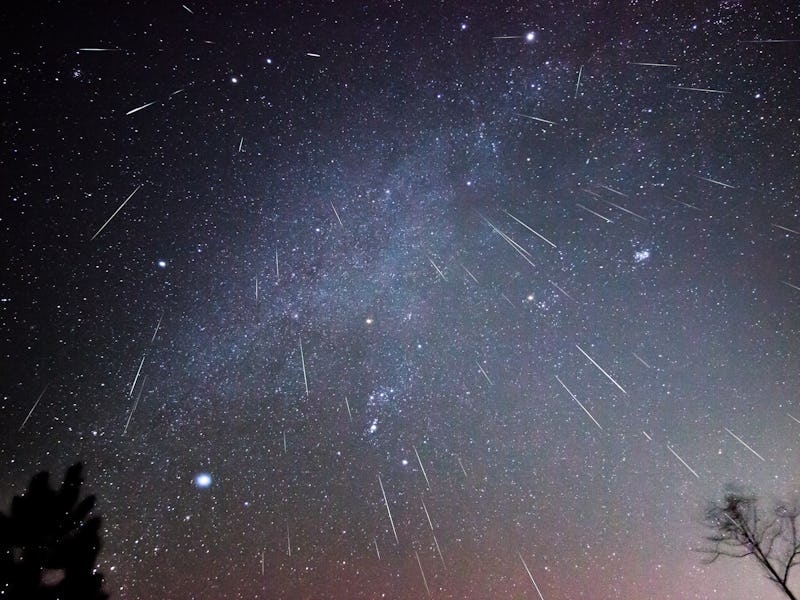You need to see summer 2021’s brightest meteor shower in the night sky
The Met Gala of meteor showers is here.

If we celebrated real, celestial stars the way we celebrate movie and TV stars, the astronomical Met Gala would have to be the Perseids meteor shower.
This cavalcade of bright orbs doesn’t involve any actual stars but rather the large, burning shards that break off from a particular comet as the planet passes through its tail. We are in the midst of Perseids season now, and soon we will be treated to their most glamorous moment in the night sky.
What defines the Perseid meteor shower
The Perseid meteor shower is the most dazzling meteor shower of the calendar year.
These streaks break off from the 109P/Swift-Tuttle comet during its tour through the inner Solar System. The Perseid name stems from their radiant, which is the astronomical term for the part of the night sky where these meteors appear to fall from — near the constellation Perseus.
For those in need of an Ancient Greek history refresh, Perseus was the legendary founder of Mycenae and the hero who slew Medusa the Gorgon. He also saved his eventual wife Andromeda (whose name lives on as that of the galaxy closest to the Milky Way) from a sea monster.
Perseus is located in the northern hemisphere’s night sky and appears near to the constellation Andromeda.
Perseus, in all his Gorgon slaying glory.
Comet 109P/Swift-Tuttle was discovered in 1862, and it orbits the Sun once every 133 years. The nucleus — essentially the center — of the comet is thought to be 16 miles in diameter.
The comet itself is made up of a conglomerate of ice, dust, and other organic material. When Earth passes through the train left in its wake as it orbits the Sun, debris flying off the comet interacts with our atmosphere to create shooting stars. Italian astronomer Giovanni Schiaparelli is credited with discovering in 1865 that the Perseid meteor shower originated from the debris flaking off the comet.
When to see the 2021 Perseid meteor shower
The Perseids appear in the night sky annually, falling to earth between July 17 and August 24
In 2021, the meteor shower will appear at its most stunning at two specific times:
- After 1 a.m. Eastern time on Thursday, August 12.
- Before sunrise — which occurs around 6 a.m. Eastern time — on Friday, August 13.
If you’re already on the lookout for future Perseids, the 2022 shower will occur between July 17, 2022, and August 24, 2022, and it peaks on August 12 and August 13. This will coincide with a Full Moon, which may obscure much of the meteor shower to our view.
NASA’s All Sky Fireball Network can help you track the meteors as they fall to earth.
A meteor streaks across the sky during the annual Perseid meteor shower of 2016.
How to see the Perseid meteor shower
These falling stars are best seen with the naked eye. If you can get out to a remote, cloudless area, you’ll be free of skyward obstructions and light pollution — and less light pollution means more visible meteors. A national park or rural spot would be best.
Part of what makes this show so spectacular is the zenithal hourly rate, or ZHR, which is the rate a meteor shower would produce under ideal conditions: a clear, dark sky, and with the radiant at its highest point. This year, the ZHR could reach 100 meteors per hour.
The Perseid meteors streak by at 37 miles per second, so it would be best to give yourself at least an hour for meteor gazing in case you miss some.
To improve viewing, allow your eyes about 30 minutes to adjust to the darkness. Avoid using screens that might interfere with your night vision.
This isn’t the time to break out your binoculars or telescope, according to NASA, because of their minuscule field of vision.
While these meteors may appear to originate from within the constellation Perseus, they can appear in any part of the night sky. So get outside, look up, and enjoy the show.
This article was originally published on